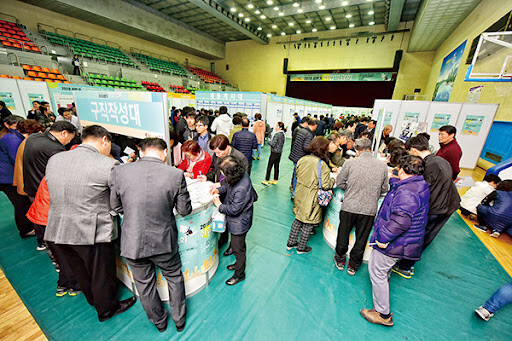
GIMPO, SOUTH KOREA – Gimpo City has announced a comprehensive '2025 Local Job Target Public Announcement System,' outlining its commitment to creating over 18,700 employment opportunities this year through a significant investment of 137.329 billion Korean Won (approximately $101 million USD). The initiative aims to sustain the city's robust employment rate of 69.6% (for the 15-64 age group), a figure achieved in the previous year. However, city officials acknowledge the persistent headwinds of a declining working-age population and broader economic uncertainties that could impact the labor market.
To counteract these challenges and achieve its ambitious job creation goals, Gimpo City has formulated a multi-pronged strategy. Central to this plan is the strategic development of industrial complex clusters designed to attract cutting-edge technology companies. This will be coupled with investments in crucial transportation and environmental infrastructure to enhance the overall industrial competitiveness of the region. The city anticipates that attracting advanced industries will generate a substantial number of high-quality jobs.
Furthermore, Gimpo is placing a strong emphasis on leveraging its unique tourism assets to stimulate job growth. Key initiatives include the revitalization of the Aegibong Peace Ecological Park, a significant landmark offering scenic views and historical context, and the promotion of vibrant local festivals such as the Aramarine Festival and the Laveniche Festival. The development of marine leisure infrastructure along the Ara Canal and at Daemyeong Port is also expected to create new opportunities in the tourism and hospitality sectors.
A significant aspect of Gimpo's employment strategy involves aligning job creation efforts with large-scale urban development projects currently underway. These include the ambitious Hangang 2 Compact City, a planned smart city development, the Gimpo Environmental Regeneration Complex, focused on sustainable resource management, and the designation of Daemyeong Port as a national fishing port, which is expected to boost the local fishing industry and related businesses. The city projects that these major developments will have a significant multiplier effect on job creation across various sectors.
Despite these promising initiatives, Gimpo City faces notable challenges. A significant portion of its general budget, 46.9%, is allocated to welfare expenditures, potentially limiting the financial resources available for direct investment in industrial infrastructure. Additionally, a substantial 70.8% of the city's total land area is designated as military protection zones and development restriction zones, which poses considerable constraints on large-scale industrial and commercial development.
Experts have suggested that for Gimpo's employment policies to have a lasting impact, the focus needs to extend beyond short-term job numbers. There is a growing call for the city to prioritize the creation of high-quality, sustainable industrial jobs and to proactively address the long-term challenges associated with an aging population and evolving demographic trends. This includes investing in workforce training and skills development programs to ensure that the local workforce is equipped for the jobs of the future.
Acknowledging these challenges and opportunities, a Gimpo City official affirmed the city's commitment to progress, stating, "Gimpo is determined to emerge as a vital economic center in the northwestern Seoul metropolitan area. We are dedicated to fostering an employment environment where businesses can thrive and our citizens can find meaningful and sustainable work, creating a mutually beneficial ecosystem for all." The success of Gimpo's ambitious job creation plan will depend on its ability to navigate the existing constraints and strategically leverage its development projects and tourism potential to attract investment and generate quality employment opportunities for its residents.
[Copyright (c) Global Economic Times. All Rights Reserved.]






























